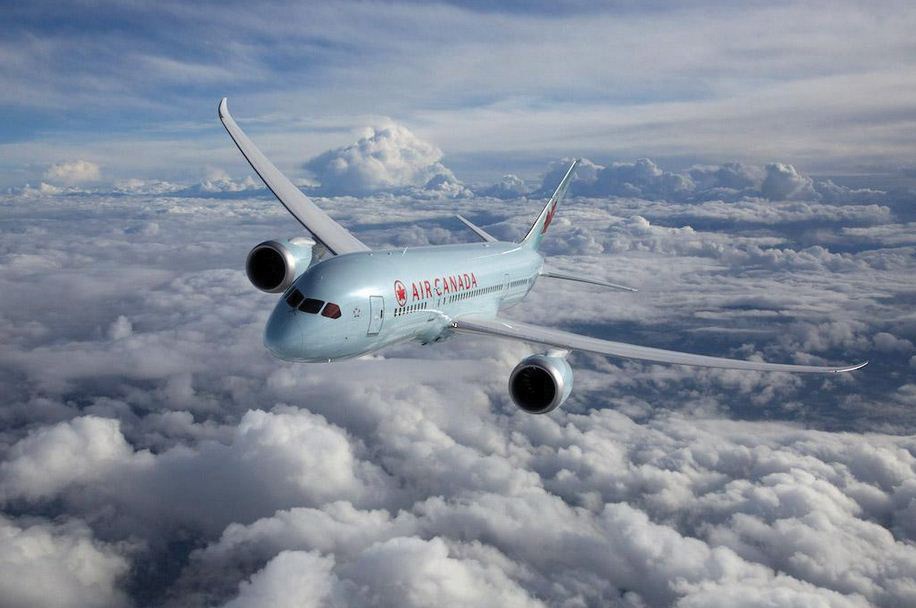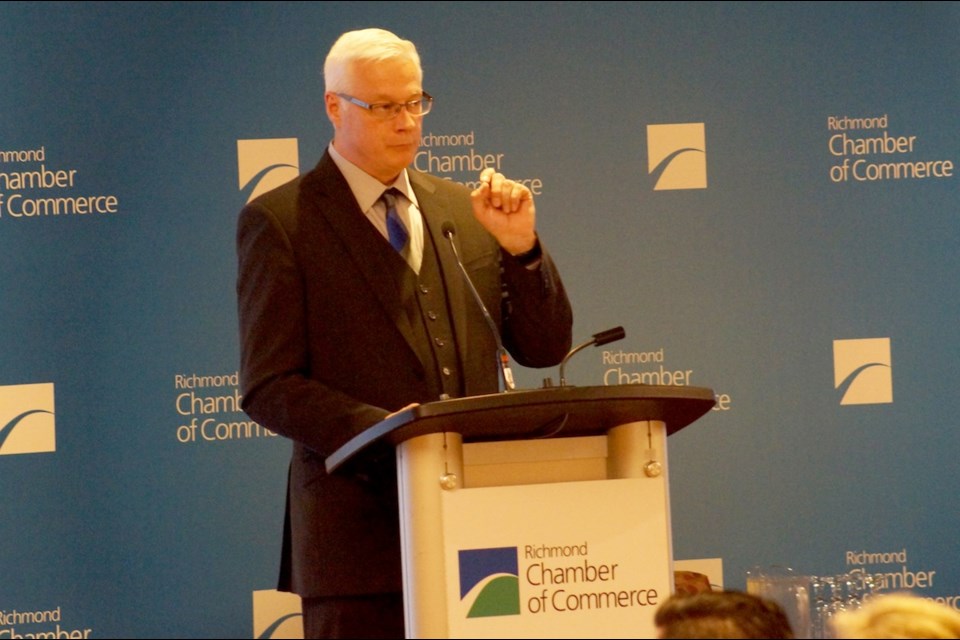Among what Vancouver International Airport CEO Craig Richmond calls one of his most “audacious” goals is to increase passengers by 25 per cent over the next five years while still reducing the airport’s (operational) carbon footprint by one third.
Perhaps more audacious — in the eyes of local environmentalists — would be his unfettered support for a planned jet fuel facility on the Fraser River that will see tankers run up and down the South Arm to unload the toxic product at a marine terminal near Riverport.
“I looked at all the options. It is the best option. I am convinced that with the 64 (environmental assessment) caveats that (the Vancouver Airport Fuel Facilities Corporation) has to look up to, it is a good, safe option. And, of course, we need that jet fuel,” said Richmond, during a brief question period at a Richmond Chamber of Commerce luncheon Friday outlining the airport’s five-year vision.
Other enviornmental goals by 2020 include reducing potable water use at the airport by 30 per cent and waste by 50 per cent.
If proven by 2020, Richmond’s environmental goals would be a lofty achievement for his award-winning, world-renowned airport that is in steep competition for a growing Chinese market.
As Richmond must juggle day-to-day business with the long-term effects air travel has on climate change, critics have charged the airport’s plans to use tankers on the salmon-filled river was simply the cheapest (and most dangerous) method of delivery.
Creating a demand for that jet fuel, Richmond said he plans to bring one million more passengers through the gates each year until 2020, bringing total annual flyers to about 25 million, while adding 5,000 more jobs at YVR (although he wasn’t specific about part- or full-time status).
“Do you realize we had more than 75 flights a week between China and YVR last year? That is the most of any airport in North America; Los Angeles and San Francisco fight us for top spot every year, but we are clearly punching way above our weight category,” Richmond told the local business crowd.
As such, Richmond’s environmental stewardship approach can be described as pragmatic; its goals noteworthy, yet ultimately a symptom of the push to grow and thus burn more fuel.

According to the Intergovernmental Panel on Climate Change air travel accounts for two per cent of global greenhouse gas emissions but will account for three per cent by 2050. That’s because studies show the demand to travel is outstripping gains made with fuel-efficient airplanes, such as the Dreamliner.
“People are going to travel because they want to. If we stop here it will only continue to grow in the developing world. I think we need to factor in the positives and benefits of travelling. It allows us to see different cultures, and that’s valuable,” Richmond told the Richmond News.
When asked how the air travel industry can expect to continue should fossil fuel supplies run dry within 50 years, Richmond said he would expect to see jets be the last consumers of such energy, as there is currently no other means to transport people in such a manner. He noted biofuel requires too much land to provide an adequate supply.
“There’s a quote from someone — I can’t remember his name but it has stuck with me — stating that we will look back and wonder how we ever used fossil fuels for anything other than air travel, and I agree. Right now there are no other (fuel) options available to us (for jet engines),” said Richmond.
He added that he sees a future for rigid aircrafts, such as electric powered blimp-like aircrafts.
“There’s the potential to transport cargo like that, and maybe people. It obviously won’t be as fast as a 500 mph jet, maybe just 70 mph, but it could be done,” he said.
Transporting products was a key talking point of Richmond’s at the event.
He spoke to how more direct flights afford local companies to either import or export fresh seafood.
“I don’t know if you want to risk flying Dungeness crab through Dallas in the summer, but you can certainly get it on a 12-hour flight,” he said.
As easy as Richmond wants to make transporting products easy, he’s also a major advocate of doing the same for people. He wants to see China join the Open Skies network and is an advocate for the Transit Without Visa process whereby international passengers can transfer at YVR without a Canadian Visa. Such a process could, for example, allow the airport to tap into India-USA routes, he said.
The key for the airport's business model is to continue to grow as a hub between North America and Asia. As well, he mentioned several times the opportunity to tap into South America.
“I am convinced in the next few years I can see an Air Canada 787 touching down from Santiago, dropping off some Vancouverites and Chileans, filling up for jet fuel and going straight to Beijing,” said Richmond.
All the while, Richmond noted safety was a continuous priority for YVR. He highlighted the fact that, starting this year, the airport will begin a three-year construction program to build runway safety areas at the end of the south and crosswind runways.
“These areas are being built to international safety standards to protect aircraft and passengers in the unlikely event of an overrun or undershoot. There’s currently no Canadian regulation – we’re doing it because it’s the right thing to do and it will cost us $70 million,” said Richmond.



